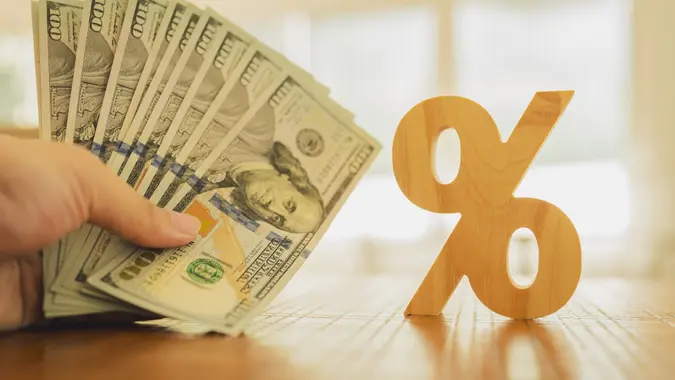6 Things Boomers Still Spend Money on That Millennials and Gen Z Don’t

Commitment to Our Readers
GOBankingRates' editorial team is committed to bringing you unbiased reviews and information. We use data-driven methodologies to evaluate financial products and services - our reviews and ratings are not influenced by advertisers. You can read more about our editorial guidelines and our products and services review methodology.

20 Years
Helping You Live Richer

Reviewed
by Experts

Trusted by
Millions of Readers
Have you ever noticed your parents or grandparents spending money on things that seem outdated and unnecessary to you? Do they still reminisce about the days they could call up Blockbuster on the landline? It probably leaves you questioning why they stick to these expensive and seemingly antiquated habits.
Instead of succumbing to the pressure of “getting with the times,” baby boomers often find comfort in familiar expenses that reflect what they know and grew up with, while avoiding new digital tools and technologies. They may seek a less digital experience by spending on tangible items for the reliability and familiarity they provide- but it could be costing them.
While those who grew up during the digital age prioritize convenience and saving a few bucks by buying stuff online, spending trends differ greatly across generations. Here’s a look at six items boomers commonly spend money on that younger generations won’t.
Staying Committed to Cable TV
Boomers prioritize reliability in their spending. To them, the extra expense of cable TV subscriptions is worth the straightforward access to the channels and programs they know and love without having to learn new tech.
“So, boomers and cable TV — it’s like bread and butter,” said Kraig Kleeman, the founder and CEO of The New Workforce.
“They often stick to these traditional cable packages, which can cost a pretty penny, from $50 to over $100 monthly. Meanwhile, we’re here with our Netflix and Hulu subscriptions, paying maybe $10 to $20 and getting all the shows we want.”
Leaving Landlines Locked In
While most Gen Zers grew up on an iPhone and never experienced the joys of calling their friends via a landline telephone, for boomers, a landline remains a dependable comfort that has become part of their routine.
“Believe it or not, many boomers still have a landline at home,” Kleeman said. “We’re all about our cell phones, but they’re paying up to $45 a month for something redundant for us. For them, it’s about reliability and the security of having a physical phone, especially in emergencies.”
Spending Paper on Print Media
Have you ever read an article online and got frustrated later when you were unable to find it again? Many boomers may not relate! This generation still enjoys tangible news offerings, from being able to complete the daily crossword by hand to experiencing a more in-depth and trusted source of information.
“Many boomers prefer to read the news the old-fashioned way, holding a paper in their hands,” Kleeman said. “This habit can cost them $10 to $30 monthly, while we’re mostly scrolling through news on our phones, often for free. There’s just something about the tangible feeling of paper and the ritual of reading it that they love.”
Giving the Gift of Greeting Cards
For boomers, a happy birthday text simply isn’t enough. This generation appreciated the more traditional practice of writing physical cards for their sentimental touch and personal gestures.
While these paper cards cost $3 to $6 each and can seriously add up over time, the price is well worth it for boomers. While younger generations opt for an emoji-filled text or social media post, boomers appreciate the offline connection and higher emotional value they believe physical cards offer.
Paying Larger Costs for Larger Cars
While younger generations opt to drive smaller, more cost-efficient vehicles, many boomers see vehicles as not only means of transportation but also as a status symbol. They are willing to splurge on the vessel they use to get from place to place more safely and comfortably while showcasing their success.
Boomers are more inclined to purchase spacious sedans or SUVs, entailing a higher initial cost, as well as more costly fuel expenditure and increased maintenance. Millennials and Gen Z tend to opt for more environmentally friendly modes of transportation, such as green vehicles or alternatives like public transit, cycling, scootering or car-sharing.
In-Store Shopping
Boomers also shop differently than younger Americans, reflecting the environment they grew up in. They prefer spending more time and money on an in-person shopping experience, while younger Americans tend to favor shopping online.
“When it comes to shopping, boomers often go to physical stores,” said Taylor Price, finance influencer and co-founder of Dfinitiv Inc. “They are losing out on the major online discounts and deals. Plus, think about those extra costs — driving to the store, parking fees and impulse buys that are easier to avoid when clicking through a website.”
Caitlyn Moorhead contributed to the reporting for this article.
 Written by
Written by  Edited by
Edited by 

























